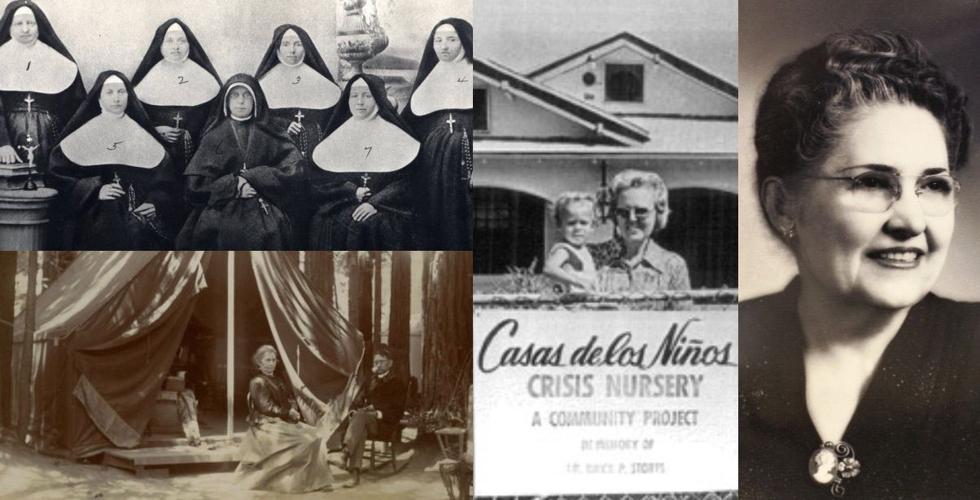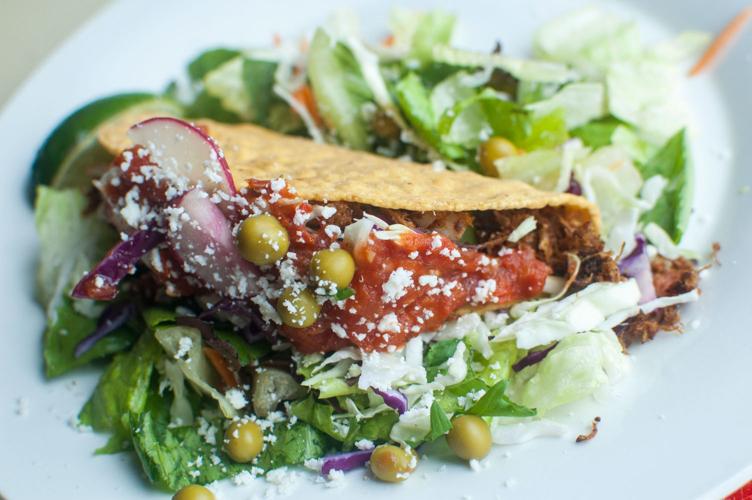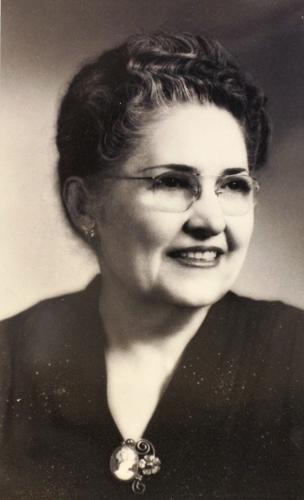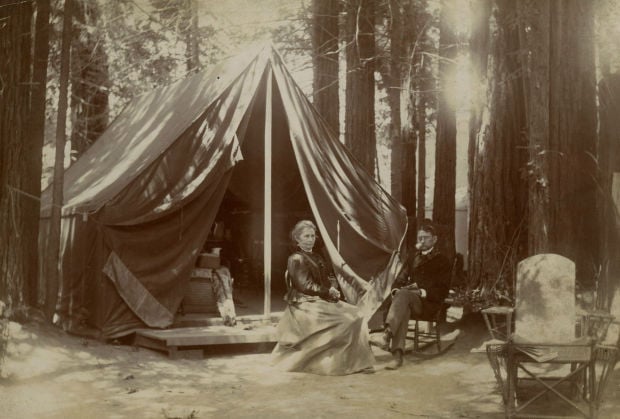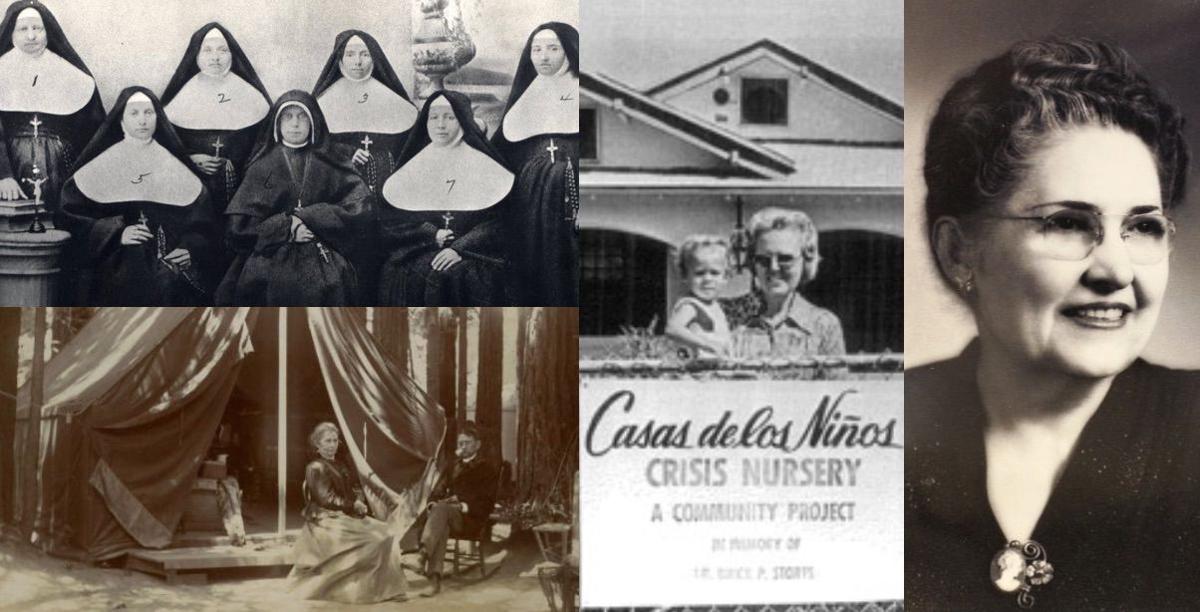March is the month when we celebrate the women who have gone before — those who stood up, spoke out and made history.
March is Women's History Month, and Tucson's past has no shortage of sheroes.
You may not have heard these women's stories in your history class (we're looking at YOU Father Kino.) But we are trying to remedy that this month with weekly reminders of Tucson's ladies of yore.
Here's part two:
Sara Allen Plummer Lemmon

Sara Lemmon, left, and her husband, John Lemmon, are pictured in an unknown place. Mount Lemmon was named for Sara Lemmon, who rode up it on horseback in 1881 with her husband and Emerson O. Stratton.
Okay, so she's not a Tucson resident, but how could we not include her on this list?
If it weren't for her, we would probably call Mount Lemmon by another name.
Born in Maine, Sara Allen Plummer Lemmon went to college in Massachusetts and taught school in New York. She came to Southern Arizona from her home in California in the 1880s on honeymoon with her husband, botanist John Gill Lemmon.
Star archives show that they called it their "botanical wedding trip."
They tried to climb the Santa Catalinas three times from the south with no luck.
The couple headed north toward Oracle where they set off again, an ill John Lemmon on pack mule and his wife following on foot.
They encountered a rancher who set them up with two horses and a guide: Himself.
E.O. Stratton took them up the mountains to the highest peak. The story goes that they christened the mountain "Mount Lemmon" in honor of Sara Lemmon, "the first white woman up there," writes Stratton in the book "Pioneering in Arizona: The Reminiscences of Emerson Oliver Stratton & Edith Stratton Kitt."
During her lifetime, she:
• Started the first library in Santa Barbara, California.
• Worked with her husband to collect, research and publish articles on plant specimens.
• Discovered new species in the Santa Catalinas that also bear the Lemmon name.
• Developed and curated with her husband the Lemmon Herbarium in California.
• Influenced California's adoption of the golden poppy as the state flower.
• Returned to Mount Lemmon with her husband to climb the peak again for their 25th wedding anniversary.
Sources: "Street Smarts: Highway, Mountain named for botanist" in the Arizona Daily Star (2015); "Life stories: Mt. Lemmon's namesake was female explorer" in the Arizona Daily Star (2011); "Mrs. Lemmon's Work Lauded" in the Oakland Tribune (1923).
Sisters of St. Joseph of Carondelet

The seven Sisters of St. Joseph of Carondelet who ventured to Tucson to start a school and heal the sick.
In 1870, seven nuns arrived in Tucson after a long trek from St. Louis, Missouri via train, boat and carriage.
These gutsy women endured the desert's hot days and cold nights, the threat of attack en route from people and animals and even marriage proposals from lovelorn cowboys unaccustomed to women traipsing the wild west.
All of that just to arrive in Tucson, a dusty frontier town that needed the good graces of these seven sisters: Ambrosia Arnichaud, Hyacinth Blanc, Emerentia Bounefoy, Maximus Croisat, Martha Peters and Euphrasia Suchet.
THOSE NAMES! 😍
They came to start a school in a town that had trouble finding funding to keep one afloat.
But these sisters did it, and as their numbers grew, so too did their educational outreach. They raised money for their endeavors by asking anyone and everyone who would give: Miners, cattlemen, regular Tucsonans and wealthy Mexicans.
Through their faithfulness and perseverance, this order of sisters left their mark on Tucson and Arizona.
During their early years in Arizona, they:
• Started schools in Tucson, Yuma and Florence and on the Tohono O'odham and Pima reservations, along with a hospital in Prescott that eventually became a school.
• Opened St. Joseph's Convent and Academy for Females.
• Turned a orphanage-damaging windstorm into a blessing. After starting a novitiate in 1876 and then transforming it into an orphanage for about 30 kids, they used a windstorm that destroyed the building as momentum to fundraise and open a new orphanage large enough for 100 kids.
• Established St. Mary's Hospital in 1880.
• Opened the St. Mary's School of Nursing in 1914.
• Left a legacy of sacrifice, compassion, healing and education for future sisters (You'll meet one of their successors in just a few moments).
Sources: "Levi's and Lace: Arizona Women Who Made History" by Jan Cleere; "Western Women: The Sisters of St. Joseph of Carondelet" by Jan Cleere for the Arizona Daily Star (2014); "A Heritage of Loving Service: The Sisters of St. Joseph of Carondelet" in the University of Arizona's digital history project "Through Our Parents' Eyes: History and Culture of Southern Arizona."
Monica Flin

Tucson's oldest Mexican restaurant was opened and owned by a woman. And it still is.
Monica Flin opened El Charro when it was rare for women to own a business. She opened the restaurant in 1922 as a way take care of herself after two failed marriages.
It is still thriving, 95 years later.
In that time, she did it all by herself. She was the hostess, the waitress and the chef in a small location on South Fourth Avenue and East 17th Street. The restaurant moved several times before it found a permanent residence in the Flin family home, built by her father Jules, in 1968.
"El Charro is not a restaurant so much as it is an extension of Monica Flin's jolly personality," according to an article published by the Tucson Daily Citizen in 1952.
El Charro Cafe still stands on Court Avenue — it's the inviting yellow building. It is owned and operated by Monica's grandniece Carlotta Flores and her family. The restaurant is open seven days a week for lunch, happy hour and dinner. Check out the menus here.

Don't be fooled by this carne seca taco's upscale accoutrements. It's Old Tucson heart and soul. ($5.95)
During her lifetime, she:
• Opened El Charro, considered one of the best Mexican restaurants in American by the New York Post in 2015.
• Invented the chimichanga or a fried burrito.
Sources: "The Flin era: creating the El Charro family traditions" featured in the Arizona Daily Star (2002) and "Today's Citizen: Supplies One of Life's Pleasures" in the Tucson Daily Citizen (1952).
Sister Kathleen Clark
Sister Kathleen Clark's idea was simple. She wanted to build a haven for abused children.

Sister M. Kathleen Clark at Casa de los Niños.
She decided this after she saw so many of the same abused children during her shifts at St. Joseph's Hospital.
She opened Casa de los Niños in 1973 when she realized she was going to have to be the one to help them. The shelter offered children a free and safe place to go while their parents got the help they needed.
This was the first crisis nursery in Tucson and one of the first in the U.S.
Tucson fashion icon Cele Peterson gave Sister Kathleen her the house for the crisis center, on the corner of Fourth Avenue and Speedway Boulevard. It's actually still being used by Casa de los Niños.
Now, Casa de los Niños welcomes children 12 and under to the crisis center and has grown to assist families in more ways than Sister Kathleen could with a thrift store and multiple locations in town.
During her lifetime, she:
• Opened one of the first crisis centers in Tucson and the U.S. Casa de los Niños.
• Published "A Dream Come True", a history of Casa de los Niños.
Sources: "Infant crisis center is nun's special project" by the Arizona Daily Star (1978) and casadelosninos.org.


